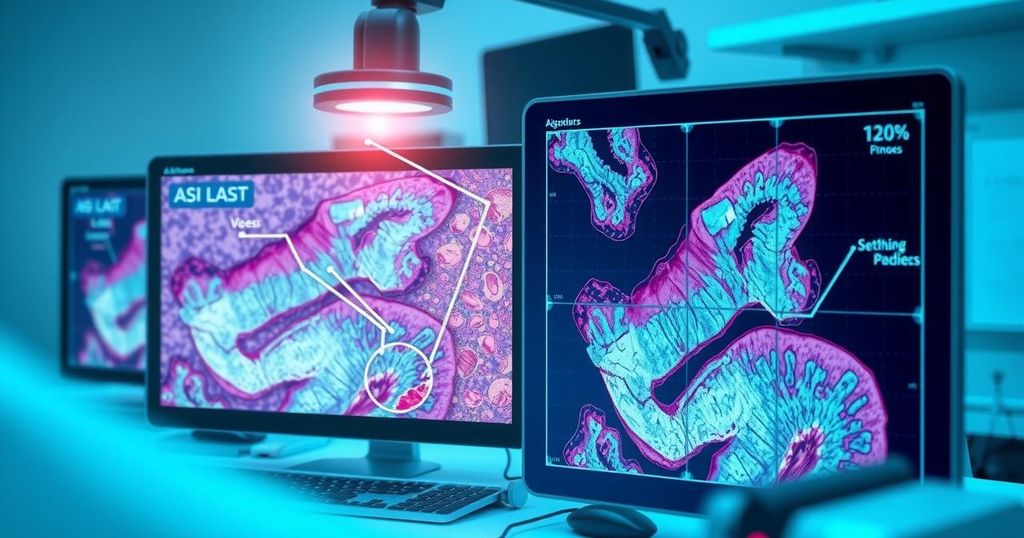AI Innovation Predicts Kidney Cancer Treatment Effectiveness
Researchers at UT Southwestern have developed an AI model capable of predicting kidney cancer patients’ responses to anti-angiogenic therapy. Published in *Nature Communications*, this model could change treatment approaches by utilizing standard histopathological slides, offering insights into patient-specific therapy effectiveness. With an emphasis on personalized medicine, this breakthrough holds promise for future cancer treatments.
In a groundbreaking study, researchers at UT Southwestern Medical Center have harnessed the power of artificial intelligence (AI) to predict responses to anti-angiogenic therapies for kidney cancer patients. Published recently in Nature Communications, the findings promise to refine treatment decisions not just for kidney cancer, but potentially for various cancers too. Kidney cancer, specifically clear cell renal cell carcinoma (ccRCC), affects nearly 435,000 people each year in the U.S., and often requires precision in treatment approaches.
Anti-angiogenic therapies are known to reduce blood flow to tumors, but their response rate isn’t stellar—the reality is that less than half of patients benefit from these treatments. Dr. Payal Kapur, a significant contributor to the study, underscored the lack of reliable biomarkers to gauge which patients might respond favorably, which often leads to unnecessary side effects and financial stress for many. So, the researchers aimed to develop a more accurate predictive model using accessible tools already available in clinical settings.
Drs. Satwik Rajaram and Kapur, leading the charge, focused on using histopathological slides—thin slices of tumor tissue that already form part of standard diagnostic workup—to glean better insights. By training an AI algorithm on data from various cases, the team sought to identify visual indications of how well a patient might respond to treatment, rather than relying solely on expensive genetic testing that has shown mixed results.
Unlike traditional AI models that can be somewhat opaque in their predictions, this one provides a visualization of the vascular structure within the tumor. This means that it doesn’t just spit out a number; it shows results that can be interpreted, allowing doctors to understand the reasoning behind the prediction. During testing with over 200 patient samples, their model performed almost as well as existing methods like the Angioscore test, highlighting its potential utility in clinical practice.
Looking forward, the research team aims to expand applications of AI in predicting responses not just to anti-angiogenic treatments but also to immunotherapy for ccRCC, a field where the treatment outcomes are also inconsistent. This research could usher in a new era of personalized medicine where patients receive more tailored, effective treatment plans based on sophisticated data analysis.
Aside from Kapur and Rajaram, several other dedicated researchers from UTSW played crucial roles in this study, illustrating a robust team effort in advancing the field of cancer treatment. The investment in this groundbreaking work comes from various sources, including the Department of Defense and the National Institutes of Health, highlighting the critical backing behind these innovations.
UT Southwestern stands known for merging top-notch biomedical research with exceptional patient care, an endeavor evident in their impressive faculty and broad clinical reach. The integration of AI into cancer treatment is just one of the many ways they are working to transform healthcare landscapes in the years to come.
The UT Southwestern Medical Center’s innovative use of AI to predict responses to kidney cancer therapies marks a significant leap forward. With their promising results, researchers are paving the way for more personalized cancer treatments, providing hope for improved patient outcomes. As the team aims to broaden AI applications to other therapies, their research could redefine standard practices in oncology, enhancing both diagnosis and treatment precision.
Original Source: www.newswise.com




Post Comment